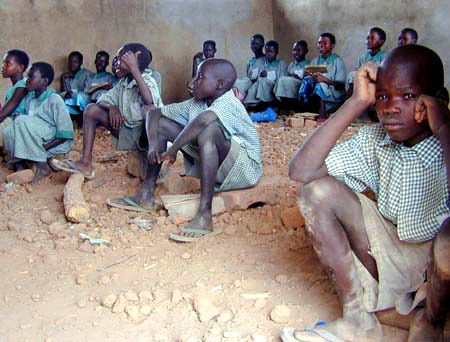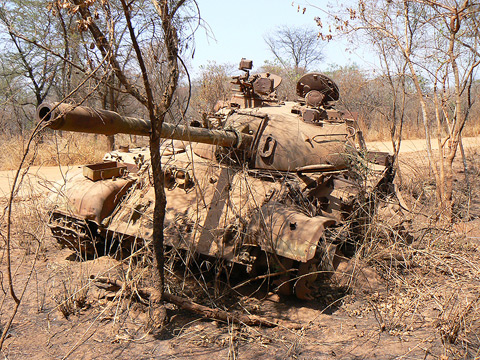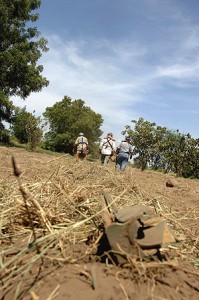Civil War
Revolution, unrest and war have ravaged Sudan’s history since its independence from British and Egyptian rule in 1956. The ruling parties have been predominately military regimes favouring Islamic-oriented policies, in distinct contrast to the beliefs and practices of the primarily Christian south where churches and schools were established by Italian Catholic missionaries and Anglicans during the colonial period. Religion has been a major cause for civil war.
Fighting was intense between 1958 and 1972, when the south resisted erosion of its cultural and political rights by the north-backed ruling powers. Conflict ceased in 1972 under the Addis Ababa Agreement which gave southern Sudan considerable autonomy from the north. Civil war broke out again in 1983 when the Sudanese President, Gaafar Nimeiry, violated the Agreement by attempting to create a federated Sudan, including states in the south. Ongoing fighting and a military coup saw an increase of casualties in the south between 1989 and 1994. Political unrest continued into the 2000s.
The Government forced Sharia law, most of our people took arms. I was 13. In 1983 the school was cut off because of war.
(Makuei Ajak Ariik)
They start to close the churches. They came in your house at night. They kill you.
(Mary Mamour)
There was a breakdown between the northern part of the country and the southern part of the country because of the civil war. The army just came in a great convoy, 200-300 trucks and cars from town to town. There would be a lot of landmines along the road.
(Alam Mathiang Machot)
Two million southern Sudanese perished as a result of civil war and nearly four million were displaced. Towns and villages were destroyed, crops burned and livestock killed or stolen. Many people died of starvation and disease. Existing tribal disputes were exacerbated. Families were separated and thousands of children, fleeing without any adults to care for them, were recruited as soldiers. Southerners living in Khartoum were stranded there during the war.
[If] they were in Khartoum they were not allowed to come back to the south.
(Alam Mathiang Machot)
[They] come in killing many people, burning all houses, took all cattle. … Mines on road. We witnessed battle.
(Makuei Ajak Ariik)
The Government used people against each other.
(Alam Mathiang Machot)
There are [many] ‘Lost Boys’ (child soldiers) in Australia.
(Makuei Ajak Ariik)
People resorted to violence to protect themselves.
(Alam Mathiang Machot)
Displacement
About a million people in southern Sudan were forced to flee the terror and violence in their homeland.
We woke up in the morning, there is many, many mines on the road. They went to the desert and came back with small artillery. They make a raid and then come back. So we run again.
(Makuei Ajak Ariik)
Many became refugees who spent years living in camps in the neighbouring countries of Ethiopia, Kenya and Uganda, where conditions simply added to the trauma they had already suffered before and during their flight.
Refugee camps were located in inhospitable desert areas. With limited opportunity to provide for themselves, refugees relied on food aid. Despite the efforts of the Office of the United Nations High Commissioner for Refugees (UNHCR), malnutrition was widespread and the camps were often unsafe. Some refugees were repeatedly attacked by local rebel groups, at times backed by the Sudanese Government.
In Kakuma [refugee camp in Kenya] there were 75,000 people, nine nationalities. Local people were targeting Dinkas. They used to come in day time, shooting people in day time.
(Makuei Ajak Ariik)
In camp in Uganda, I organised a school for 3,000 children with 400 teachers. I have to organise them but the school had no support, no materials, nothing … so we opened the school under a tree … children were writing on the ground.
(Hermann Androga Awola)
Two of my children were killed [in Uganda] in one year … I had cows … people became jealous … my children caring for these cattle were killed. They used poison to kill or bewitching was used to kill two [of my] children who were watching the flock.
(Hermann Androga Awola)
Rebuilding southern Sudan

Classroom conditions in the Equatoria region of southern Sudan. Courtesy: Lostboyshr, Flickr Creative Commons
A peace agreement was signed in 2005 by the Government and the Sudanese People’s Liberation Movement, a former rebel group from the south. It ended the fighting and has given the south a large degree of autonomy for six years.
However, after suffering for years in camps, over 300,000 refugees from southern Sudan have returned to their homeland to find services are minimal and are not well placed to assist with reconstruction.
Roads, buildings and health services have suffered from years of neglect or destruction. In 2004, there were three decent hospitals and one doctor for every half a million people in the south. Landmines laid during the years of war remain an ongoing threat.
In 2011, the region will have the opportunity to vote for full independence.
Refuge in Australia
The Australian Government has been active in the resettlement of southern Sudanese people. In 2007, the Sudanese community was one of the fastest growing groups of settlers in Australia. Between 1997 and 2007, the number of newly-arrived immigrants born in Sudan increased by approximately 34% each year, primarily due to humanitarian programs from 2001. The vast majority described themselves as Christian.
Between 2001 and 2006, Sudanese-born new immigrants settled mainly in Victoria (36%), New South Wales (24%) and to a lesser extent Queensland (14%), largely in the capital cities. Only 10 per cent reside in regional Australia and many are located in cities such as Toowomba, which already has an established Sudanese community.


